Tips to Choose the Best Fabric for Your Sewing Project
Choosing the right fabric for your sewing project can feel like standing at a crossroads, with multiple paths leading to different outcomes. It’s not just about picking a pretty color or a trendy pattern; it’s about understanding the fabric's characteristics and how they align with your project goals. Whether you’re crafting a cozy quilt, a flowy dress, or a sturdy bag, the fabric you select can make or break your creation. So, let’s dive into some essential tips that will help you navigate the fabric jungle and emerge victorious with a project that not only looks good but feels good to work with!
When embarking on your sewing journey, the first step is to familiarize yourself with the various fabric types available. Fabrics can be broadly categorized into two groups: natural and synthetic. Natural fabrics, like cotton, linen, and silk, are derived from plants or animals. They are known for their breathability and comfort, making them perfect for clothing and home decor. On the other hand, synthetic fabrics, such as polyester and nylon, are man-made and often boast durability and resistance to wrinkles and stains. Understanding these distinctions can significantly influence the overall look and feel of your sewing project.
Another crucial factor to consider is the weight and drape of the fabric. Fabric weight refers to how heavy or light a fabric is, while drape describes how the fabric falls and moves. These characteristics affect not only the sewing process but also the final appearance of your creation. For example, if you're making a structured garment, like a tailored jacket, you might opt for a heavier fabric that holds its shape well. Conversely, if you're sewing a flowing dress, a lightweight fabric with good drape will create that beautiful, soft silhouette.
Lightweight fabrics are a favorite among sewers for their versatility and ease of use. These fabrics are typically soft and delicate, making them perfect for garments that require a gentle touch. However, working with lightweight fabrics can be a bit tricky, as they tend to shift and fray easily. To ensure success, consider using a fine needle and a straight stitch to maintain control. Additionally, using a fabric stabilizer can help prevent any unwanted movement during sewing.
Some popular lightweight fabrics include chiffon, voile, and georgette. Each of these fabrics brings its unique qualities to the table:
| Fabric | Characteristics | Ideal Uses |
|---|---|---|
| Chiffon | Sheer, lightweight, and flowy | Dresses, blouses, and overlays |
| Voile | Soft, semi-sheer, and breathable | Summer garments, curtains, and linings |
| Georgette | Lightweight with a crinkled texture | Dresses, skirts, and blouses |
When sewing with lightweight fabrics, consider the following tips:
- Use a fine needle to minimize holes in the fabric.
- Opt for a straight stitch to keep seams neat and prevent puckering.
- Employ pins or clips to hold the fabric in place, avoiding any shifting during sewing.
Medium and heavyweight fabrics are the backbone of many sewing projects, providing durability and structure. Fabrics like denim, canvas, and twill fall into this category. These materials are perfect for projects that require a bit more strength, such as bags, jackets, and home decor items. They are easier to sew and manipulate, making them a great choice for beginners and seasoned sewers alike. Plus, their robust nature means they can withstand wear and tear, ensuring your creations last for years to come.
Now that you have a handle on fabric types and weights, let’s talk about color and pattern. These elements are not just about aesthetics; they can significantly influence the mood and style of your project. Choosing the right color can evoke emotions, while patterns can add depth and interest. So, how do you make these choices?
Understanding the basics of color theory can be a game-changer in your fabric selection process. Complementary colors can create a vibrant look, while analogous colors can provide a more harmonious feel. Think about the vibe you want to convey with your project—do you want it to be bold and eye-catching, or soft and subtle? Experimenting with color swatches can help you visualize your options before making a final decision.
When it comes to patterns, consider how they will complement your project and personal style. A busy print can be stunning, but it might overwhelm a simple design. Conversely, a solid fabric can provide a chic backdrop for intricate details. Always keep in mind the scale of the pattern in relation to the size of your project. A large floral print might look fantastic on a dress, but it could be too much for a small accessory.
1. How do I know what fabric is best for my project?
Consider the type of project, the fabric characteristics, and your personal style. Lightweight fabrics are great for flowy garments, while heavier fabrics work well for structured pieces.
2. Can I mix different fabric types in one project?
Yes, but be cautious! Mixing fabrics with different weights and drapes can lead to challenges in sewing. Make sure they complement each other in terms of feel and appearance.
3. What should I do if my fabric keeps fraying?
Using a serger or a zigzag stitch can help prevent fraying. Additionally, consider using a fabric stabilizer or interfacing for extra support.
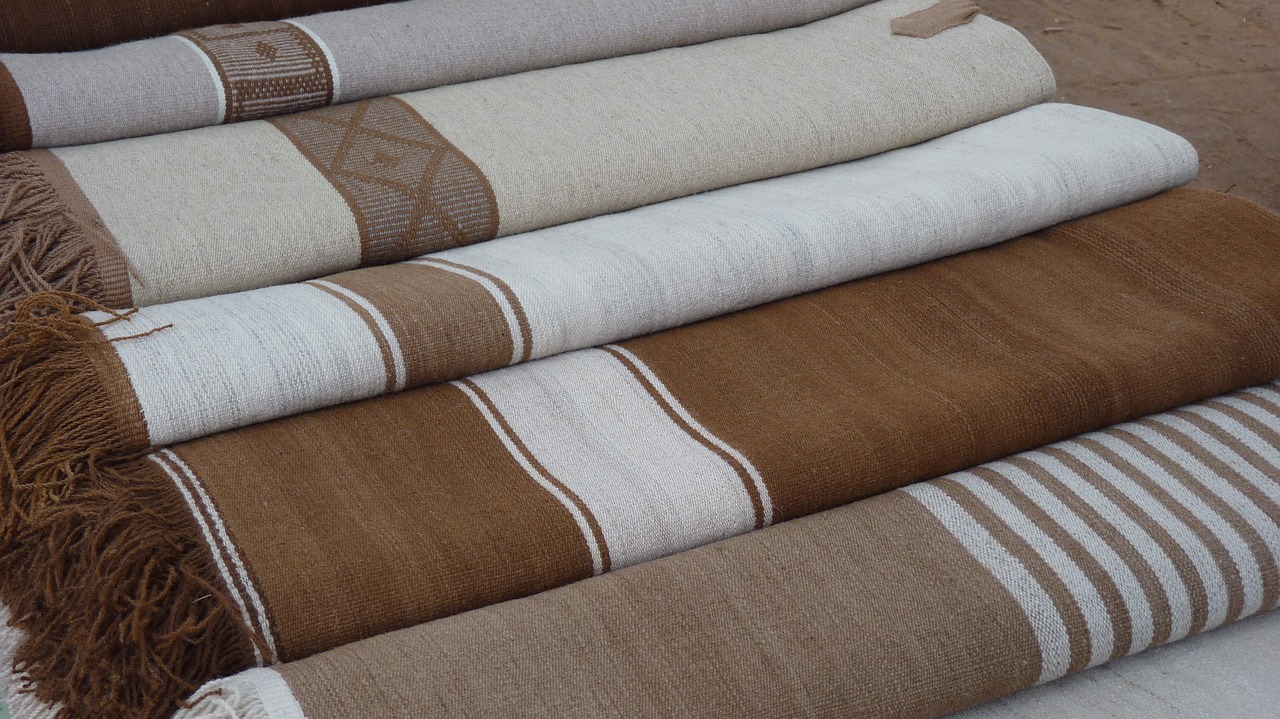
Understanding Fabric Types
When diving into the world of sewing, one of the first things you’ll encounter is the vast array of fabric types. Each fabric has its own unique characteristics, and understanding these can make or break your sewing project. Whether you're looking to create a cozy quilt, a stylish dress, or durable upholstery, the fabric choice is crucial. Fabrics can generally be categorized into two main types: natural and synthetic.
Natural fabrics are derived from plants or animals. These include cotton, linen, silk, and wool. They are often praised for their breathability and comfort, making them ideal for clothing that is worn against the skin. For instance, cotton is a fantastic choice for summer garments due to its lightweight and moisture-absorbing properties. On the other hand, synthetic fabrics, such as polyester, nylon, and spandex, are created through chemical processes. While they may not offer the same breathability as natural fabrics, they are often more durable and resistant to wrinkling, fading, and shrinking. This makes them a popular choice for activewear and outdoor gear.
Understanding the fabric types also involves knowing how they influence the look and feel of your finished project. For example, silk has a luxurious sheen and drapes beautifully, making it perfect for evening wear. In contrast, denim is sturdy and has a distinct texture, making it a go-to for casual wear and durable items. So, when selecting your fabric, consider not just the aesthetic appeal but also the practical aspects of how the fabric will perform in your project.
Here’s a quick comparison of some common fabric types:
| Fabric Type | Characteristics | Ideal Uses |
|---|---|---|
| Cotton | Soft, breathable, easy to sew | Clothing, quilts, home décor |
| Silk | Luxurious, smooth, delicate | Formal wear, linings, scarves |
| Wool | Warm, resilient, insulating | Winter garments, blankets |
| Polyester | Durable, wrinkle-resistant, versatile | Activewear, upholstery, linings |
| Linen | Strong, breathable, textured | Summer clothing, tablecloths |
As you can see, each fabric type has its own niche, and knowing where they excel can significantly enhance your sewing experience. So, before you make a purchase, take a moment to consider not only the type of fabric but also its characteristics and how they align with your project goals. This will set you on the path to creating something truly special.
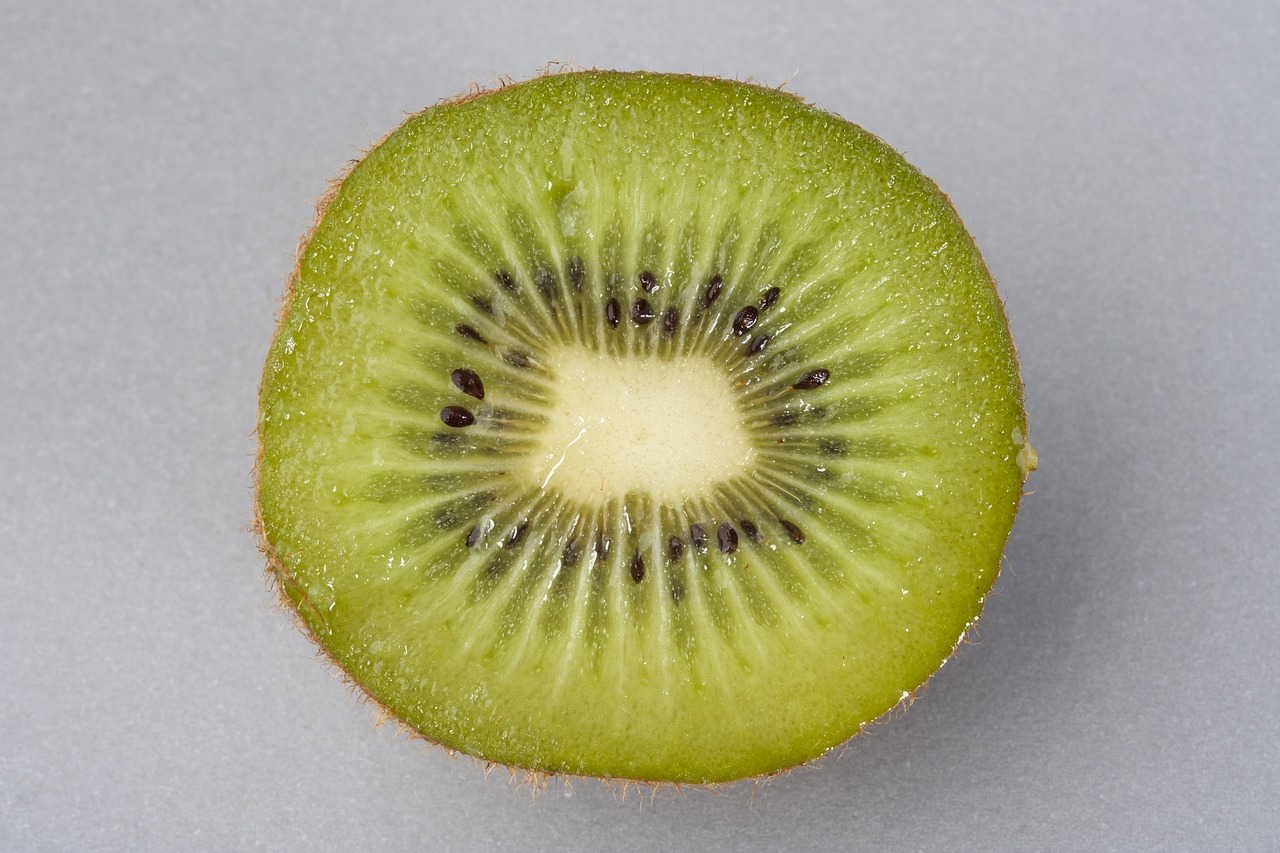
Fabric Weight and Drape
When diving into the world of sewing, one of the most crucial aspects to consider is fabric weight and drape. These two factors play a significant role in determining how your fabric will behave during the sewing process and how your finished project will look and feel. Understanding the weight of a fabric can help you choose the right material for your specific project, ensuring that you create something that not only looks great but also functions well. Think of fabric weight as the backbone of your sewing project; it influences everything from the pattern you choose to the type of stitches you’ll use.
Fabric weight is generally categorized into three main types: lightweight, medium weight, and heavyweight. Each category has its unique characteristics and applications. For instance, lightweight fabrics, like chiffon or silk, are perfect for flowy garments, while heavyweight fabrics, such as denim or canvas, are ideal for structured items like jackets or bags. The weight of the fabric is usually measured in ounces per square yard or grams per square meter, which can help you gauge how it will perform in your sewing project. A quick reference table can help you understand the general weight classifications:
| Fabric Weight | Common Uses |
|---|---|
| Lightweight (1-3 oz) | Blouses, dresses, linings |
| Medium Weight (4-7 oz) | Pants, skirts, quilting |
| Heavyweight (8 oz and above) | Coats, jackets, upholstery |
Now, let’s talk about drape. Drape refers to how a fabric falls and flows when it’s cut and sewn. It can significantly affect the overall aesthetic of your project. A fabric with a good drape will create beautiful lines and shapes, while a stiffer fabric may hold its shape but could also look bulky. When choosing fabric for your project, consider how the drape will complement your design. For example, if you’re making a flowing maxi dress, you’ll want a fabric that drapes beautifully, such as rayon or a soft jersey knit. On the other hand, if you’re looking to create a structured blazer, a fabric with less drape, like wool or cotton twill, would be more suitable.
It's also essential to consider the interaction between weight and drape. A lightweight fabric with a lot of drape can create stunning, flowing garments, but it may also require special handling techniques to prevent it from shifting during sewing. Conversely, a heavyweight fabric with minimal drape can be easier to sew but might not provide the fluidity you desire in certain designs. This balance is key in achieving the desired outcome for your sewing project.
In summary, understanding fabric weight and drape is vital for any sewing enthusiast. By considering these factors, you can select the perfect fabric that not only enhances the beauty of your project but also ensures it is practical for your intended use. So next time you’re browsing through fabric stores or online shops, take a moment to think about how the weight and drape of each material will impact your sewing adventure!
- What is the best way to determine fabric weight? You can check the fabric label for its weight in ounces or grams per square meter, or you can weigh a sample yourself.
- How does drape affect my sewing project? Drape affects how the fabric falls and moves, which can change the overall look and feel of your finished project.
- Can I mix different fabric weights in one project? Yes, but it requires careful planning to ensure that the combination works well together and maintains the desired shape and flow.
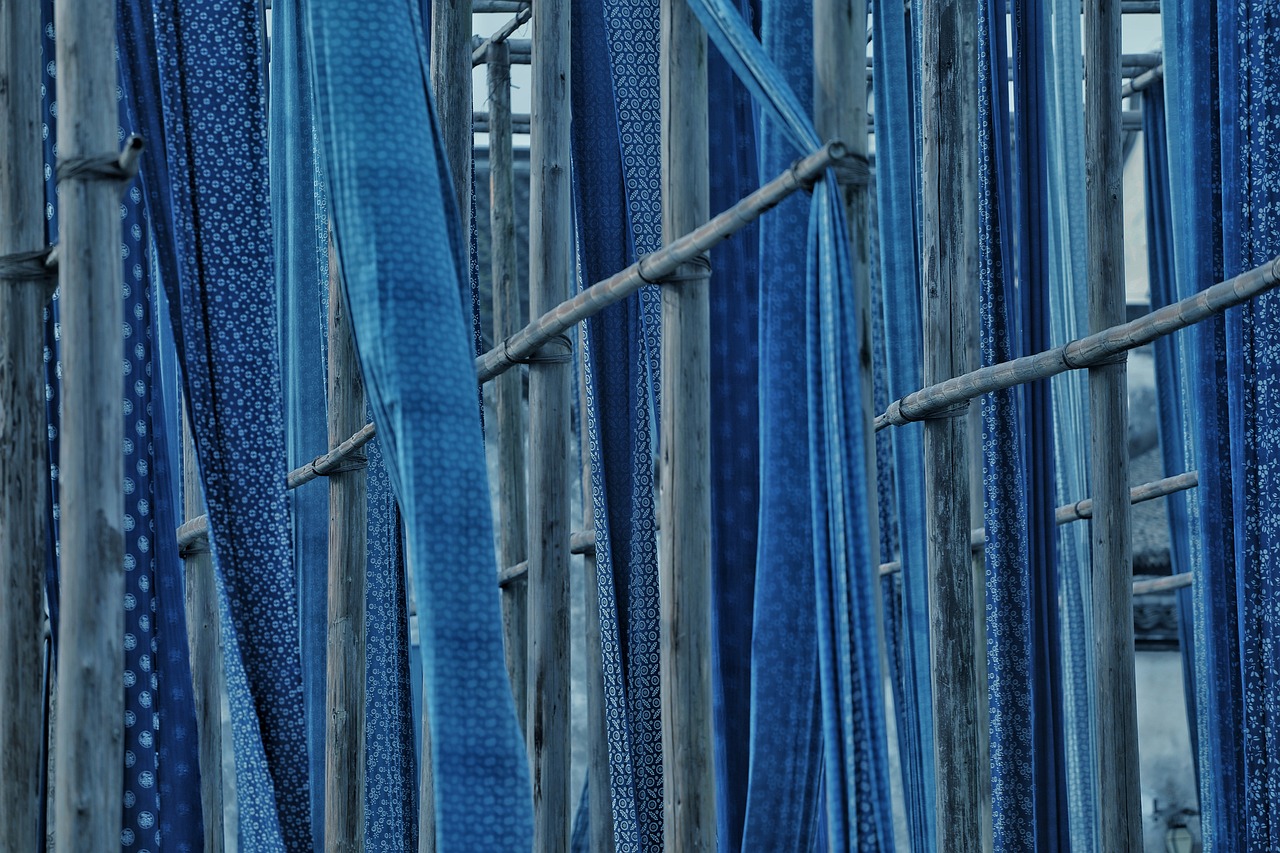
Lightweight Fabrics
When it comes to sewing, are a delightful choice that can elevate your projects to new heights. These fabrics are characterized by their airy feel and fluid drape, making them perfect for garments that require a touch of elegance and movement. Imagine wearing a dress that flows gracefully with every step you take; that's the magic of lightweight fabrics! However, working with these delicate materials can be a bit tricky, so it's essential to understand their properties and how to handle them effectively.
Lightweight fabrics are typically defined as those weighing less than 5 ounces per yard. They are often used in various sewing projects, from flowing dresses to soft blouses and even linings. One of the key features of lightweight fabrics is their drape, which refers to how the fabric falls and moves. Fabrics with a good drape can create beautiful silhouettes that enhance the overall look of your garment. But beware—because of their lightness, these fabrics can also be prone to shifting and fraying, which can lead to frustration during the sewing process.
Some of the most popular lightweight fabrics include:
- Chiffon: This sheer fabric is known for its delicate texture and beautiful drape, making it ideal for evening wear and layering.
- Voile: A soft, lightweight cotton fabric that is perfect for summer dresses and blouses. It has a slightly crisp finish that adds structure.
- Georgette: Similar to chiffon but with a slightly heavier weight, georgette offers a bit more durability while still maintaining a lovely flow.
When sewing with lightweight fabrics, there are a few tips and tricks that can help you achieve the best results. First, always use a fine needle, such as a size 60/8 or 70/10, to avoid damaging the fabric. A sharp needle will help you make clean stitches, reducing the risk of snags or runs. Additionally, consider using a walking foot or a roller foot on your sewing machine. These attachments help feed the fabric evenly, preventing it from shifting or bunching as you sew.
Another important technique is to use a lightweight interfacing when necessary. This can provide additional support to areas like collars or cuffs without adding bulk. When it comes to seams, try using a French seam or a narrow hem to finish the edges. These methods not only prevent fraying but also give your garment a polished look. Finally, consider using a stay stitch along the edges of your fabric pieces to help maintain their shape as you work with them.
In summary, lightweight fabrics can be a wonderful addition to your sewing repertoire. By understanding their characteristics and employing the right techniques, you can create stunning garments that are both comfortable and stylish. So, the next time you find yourself in the fabric store, don't shy away from those lovely lightweight options—embrace their potential and let your creativity soar!
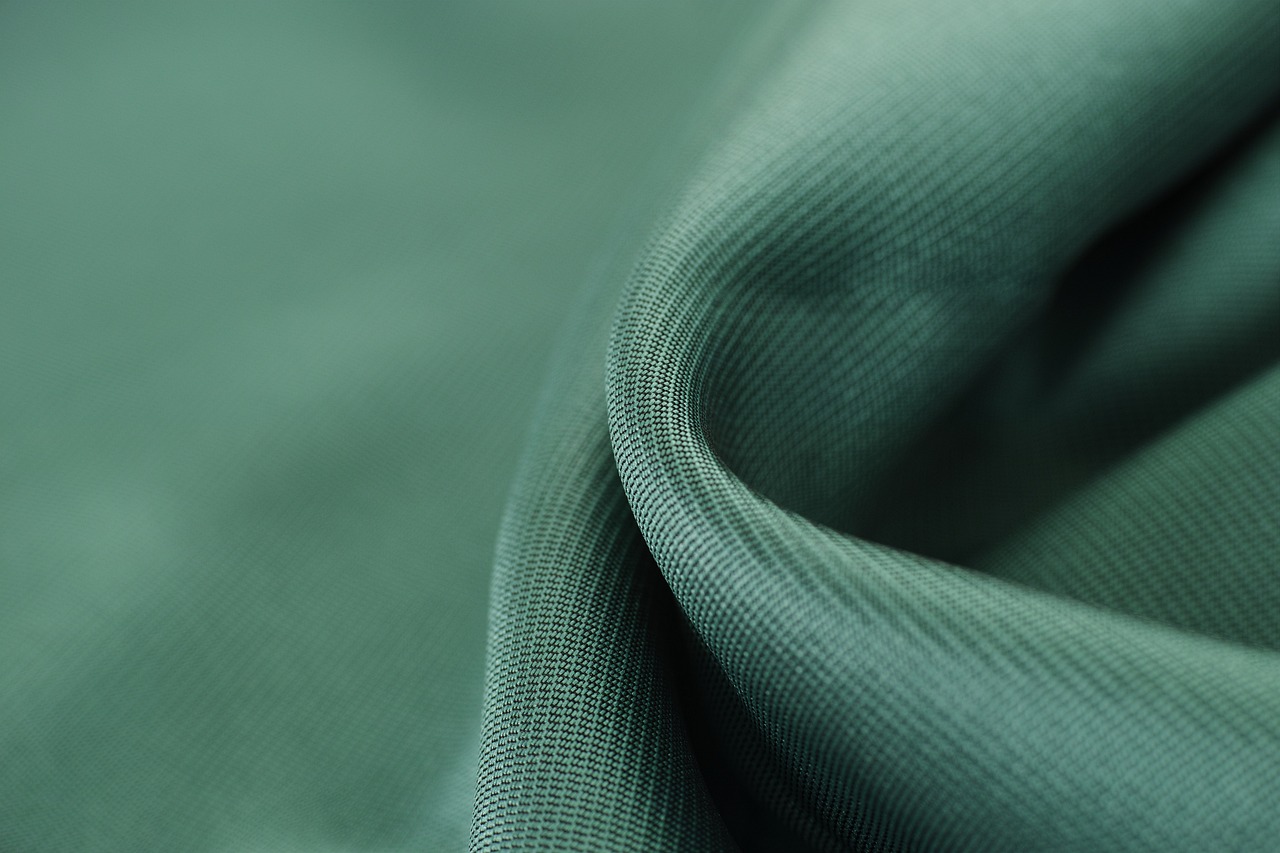
Common Lightweight Fabrics
When it comes to lightweight fabrics, a world of possibilities opens up for your sewing projects. These fabrics are often characterized by their delicate feel and airy quality, making them perfect for garments that require movement and flow. Among the most popular lightweight fabrics are chiffon, voile, and organza. Each of these fabrics brings its unique charm and challenges to the table, so let’s dive deeper into their characteristics and ideal uses.
Chiffon is a sheer, lightweight fabric that is often used for evening wear and formal dresses. It has a soft drape and a slightly crinkled texture, which adds an ethereal quality to any garment. However, working with chiffon can be tricky due to its slippery nature. To tackle this, it’s advisable to use a fine needle and take your time while sewing. Pairing chiffon with a lining can also help achieve a more polished finish.
Voile, on the other hand, is a lightweight cotton fabric that is slightly more structured than chiffon. It offers a soft, breathable option that is ideal for summer dresses, blouses, and curtains. One of the best features of voile is its ability to hold shape while still providing a light, airy feel. When sewing with voile, consider using a universal needle and a straight stitch to maintain its integrity and prevent fraying.
Another noteworthy lightweight fabric is organza, which is a thin, crisp fabric often used in formal wear, overlays, and bridal gowns. Its stiffer nature allows it to hold shapes beautifully, making it a favorite for creating ruffles and voluminous silhouettes. However, organza can be challenging to sew due to its tendency to fray. To combat this, use a narrow hem or a serger to finish the edges and ensure a clean look.
In addition to these popular choices, there are other lightweight fabrics worth exploring, such as batiste, which is a soft, semi-sheer fabric often used for baby clothes and delicate garments, and georgette, which is a slightly heavier alternative to chiffon that drapes beautifully. Each of these fabrics has its own set of characteristics that can elevate your sewing projects, but they also require specific techniques to handle them effectively.
To summarize, here’s a quick comparison of the common lightweight fabrics:
| Fabric | Characteristics | Ideal Uses |
|---|---|---|
| Chiffon | Sheer, slippery, soft drape | Evening wear, formal dresses |
| Voile | Lightweight, breathable, soft | Summer dresses, blouses, curtains |
| Organza | Crisp, stiffer, sheer | Formal wear, overlays, bridal gowns |
| Batiste | Soft, semi-sheer | Baby clothes, delicate garments |
| Georgette | Lightweight, slightly heavier than chiffon | Flowy dresses, blouses |
Choosing the right lightweight fabric can make a significant difference in your sewing project. Whether you opt for the ethereal quality of chiffon or the structured feel of organza, understanding the characteristics and best uses of these fabrics will help you create stunning pieces that are not only beautiful but also enjoyable to wear.
- What is the best needle to use for lightweight fabrics? A fine needle, such as a 70/10 or 60/8, is recommended to prevent damaging the fabric.
- Can I use a regular sewing machine for lightweight fabrics? Yes, but it’s crucial to adjust the tension and stitch length to accommodate the delicate nature of these fabrics.
- How can I prevent fraying when working with lightweight fabrics? Using a serger or a narrow hem technique can help finish the edges and minimize fraying.
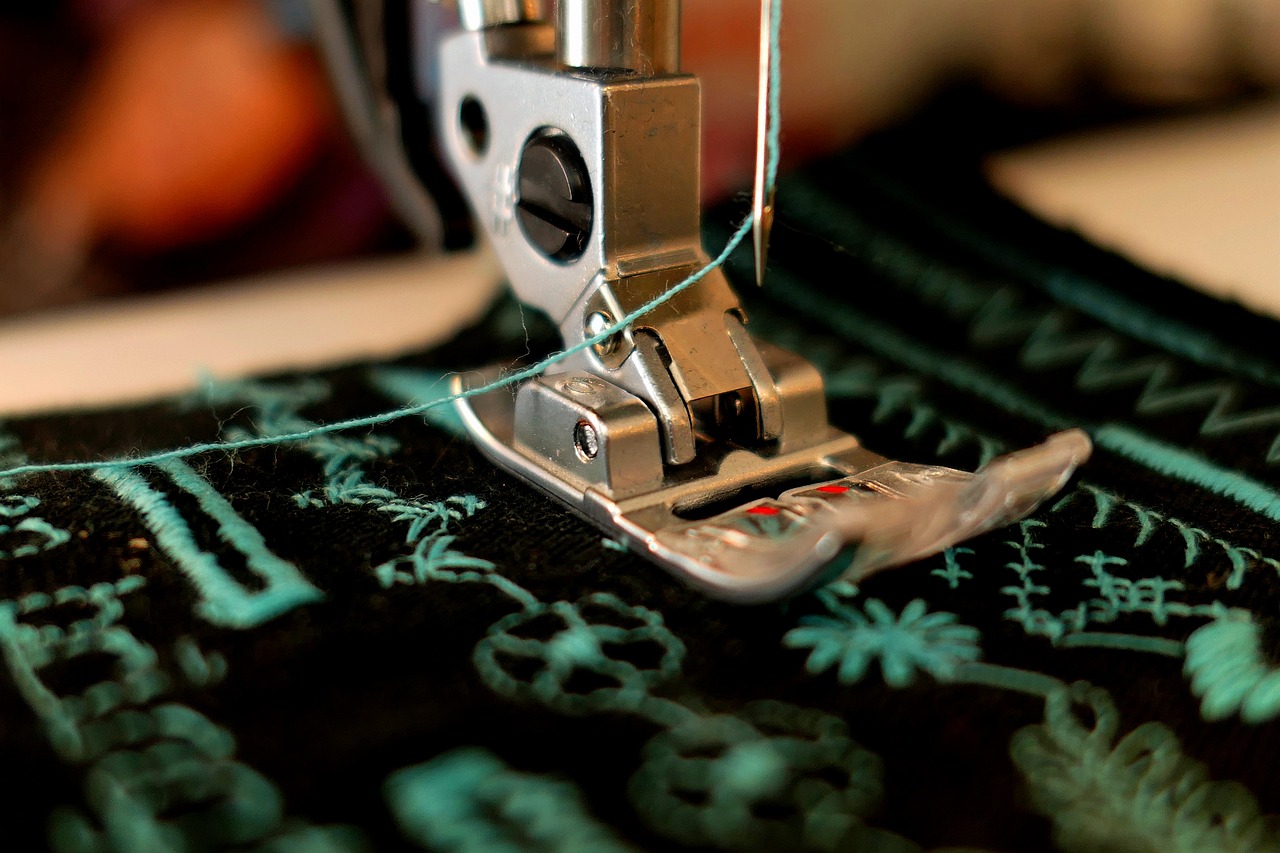
Sewing Tips for Lightweight Fabrics
When it comes to sewing with lightweight fabrics, the experience can be both exciting and a bit daunting. These delicate materials can add a touch of elegance and flow to your projects, but they also require a gentle hand and some special techniques to work with effectively. So, how do you ensure your sewing experience is as smooth as the fabric itself? Let’s dive into some essential tips that will make your journey through lightweight fabric sewing a breeze.
First and foremost, choosing the right needle is crucial. Lightweight fabrics typically benefit from a fine needle, such as a size 70/10 or 60/8. This helps to prevent any damage, like snagging or tearing, which can easily occur with heavier needles. Additionally, consider using a sharps needle for woven fabrics and a ballpoint needle for knits. Each type of needle is designed to glide through the fabric without leaving behind any unsightly holes or marks.
Next up is your choice of thread. Opt for a fine thread that matches the weight of your fabric. Using a heavier thread can lead to puckering, which is the last thing you want when working with these airy materials. A good rule of thumb is to use a cotton or polyester thread that is lightweight yet strong enough to hold your seams together. Always remember to test your thread choice on a scrap piece of fabric before you start your actual project!
Now, let’s talk about stabilizing your fabric. Lightweight materials can shift and slide around, making it tricky to achieve straight seams. To combat this, you can use a lightweight stabilizer or interfacing. This provides the necessary support without adding bulk, ensuring that your fabric behaves as you sew. You can also try using tissue paper or a wash-away stabilizer under your fabric to help it glide smoothly through your sewing machine.
Another important aspect is the sewing technique. When working with lightweight fabrics, it’s beneficial to use a longer stitch length. A longer stitch helps to reduce the risk of puckering and allows the fabric to move freely. Additionally, consider using a straight stitch or a zigzag stitch depending on your fabric type to ensure the seams are secure yet flexible. If you’re feeling adventurous, try a French seam for a clean finish that adds durability without compromising the delicate nature of the fabric.
Lastly, don’t forget to handle your fabric with care. Always use sharp scissors to cut your lightweight fabric, as dull scissors can cause fraying and uneven edges. When pressing, use a low heat setting on your iron and always place a pressing cloth between the iron and your fabric to avoid any scorching or shine. With these tips in mind, you’ll be well on your way to creating beautiful, lightweight fabric projects that are sure to impress.
- What type of fabric is considered lightweight?
Lightweight fabrics include materials like chiffon, voile, and lawn. These fabrics are typically thin and airy, making them ideal for flowing garments. - Can I use a regular sewing machine for lightweight fabrics?
Yes, a regular sewing machine can handle lightweight fabrics, but it's essential to adjust the needle and thread to suit the fabric type. - How do I prevent fraying on lightweight fabrics?
Using a zigzag stitch or a serger can help prevent fraying. Additionally, finishing the edges with bias tape can provide a clean look.
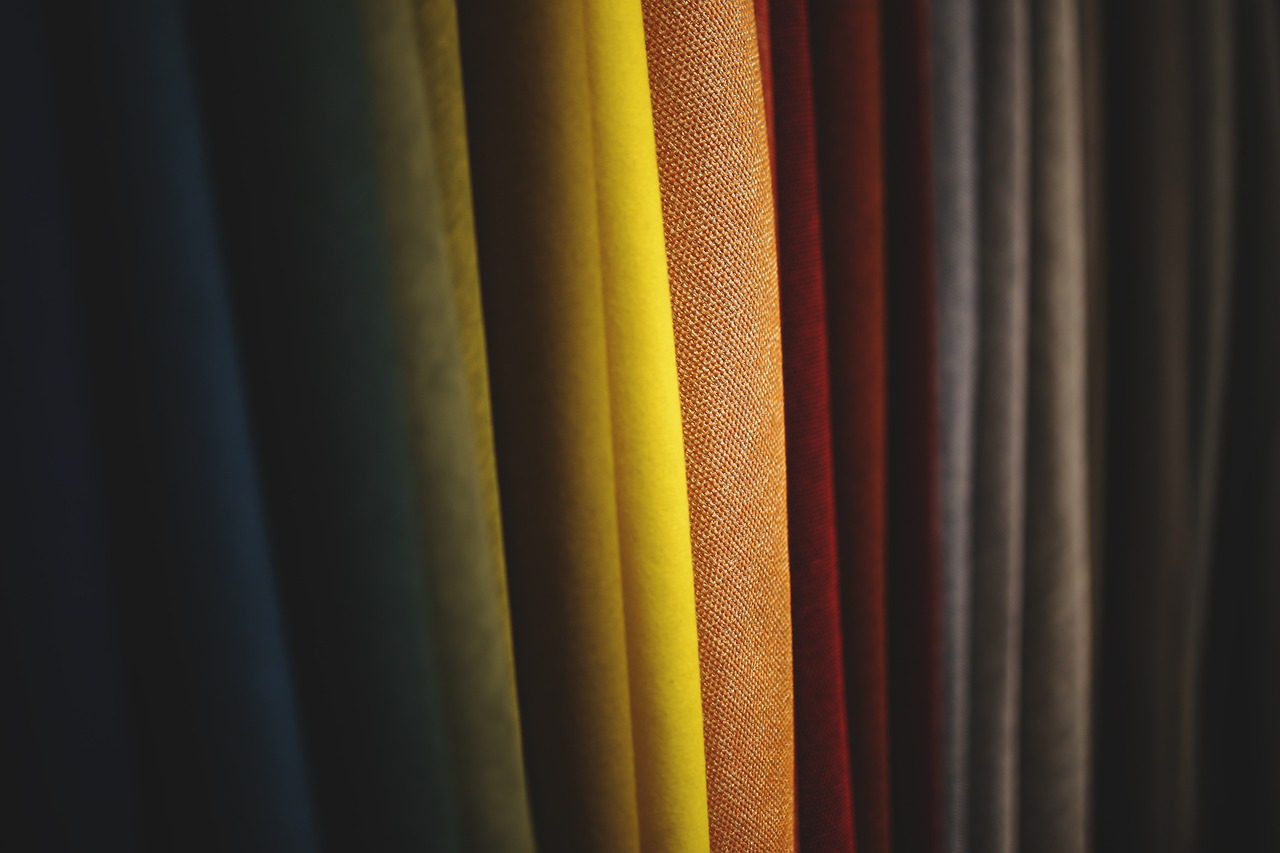
Medium and Heavyweight Fabrics
When it comes to sewing, choosing the right fabric can make or break your project, especially when you venture into the realm of . These fabrics are not just about thickness; they are about structure, durability, and the overall aesthetic of your creation. Mediumweight fabrics are typically versatile, striking a balance between lightweight and heavyweight options. They provide enough body to hold their shape while still being manageable to work with. Think of them as the Goldilocks of fabrics—not too heavy, not too light, but just right for a variety of projects.
On the other hand, heavyweight fabrics are perfect for projects that require a bit more substance. They lend themselves beautifully to items like jackets, bags, and upholstery. The robust nature of these fabrics means they can withstand wear and tear, making them ideal for items that will see a lot of use. Imagine wrapping yourself in a cozy, heavyweight wool coat on a chilly day; it’s all about that comforting, substantial feel.
When selecting medium or heavyweight fabrics, consider the project type and the desired outcome. For instance, if you're making a structured dress, a mediumweight cotton or linen might be perfect. These fabrics provide enough support to create clean lines and shapes. Conversely, if you're crafting a durable tote bag, a heavyweight canvas or denim will not only hold its shape but also withstand the rigors of daily use.
Here are some common types of medium and heavyweight fabrics you might want to consider:
- Cotton Twill: This mediumweight fabric is known for its diagonal weave, making it durable yet flexible, perfect for trousers and skirts.
- Denim: A classic heavyweight fabric, denim is versatile and can be used for everything from jeans to jackets.
- Canvas: This heavyweight option is ideal for bags, outdoor gear, and home decor projects due to its strength.
- Wool: A medium to heavyweight fabric, wool is excellent for outerwear, providing warmth and structure.
When working with these fabrics, it’s essential to use the right sewing techniques. Heavyweight fabrics often require a stronger needle and may benefit from a walking foot on your sewing machine to help manage the thickness. On the flip side, mediumweight fabrics can be sewn with standard needles but still require attention to detail to ensure seams lay flat and finish nicely. It's like cooking; the right tools and techniques make all the difference in achieving a delicious outcome!
In conclusion, medium and heavyweight fabrics offer a world of possibilities for your sewing projects. By understanding their unique characteristics and how they can enhance your creations, you’ll be well on your way to producing stunning, durable items that reflect your personal style. So, whether you're crafting a cozy jacket or a sturdy bag, embrace the beauty of these versatile fabrics!
Q: What is the best way to pre-wash medium and heavyweight fabrics?
A: It's important to pre-wash your fabrics to prevent shrinking and color bleeding. Use warm water and a gentle cycle, then tumble dry on low. Always check the fabric care label for specific instructions.
Q: Can I use a regular sewing machine for heavyweight fabrics?
A: Yes, but you may need to use a heavy-duty needle and consider using a walking foot to help guide the fabric through the machine smoothly.
Q: How can I tell if a fabric is medium or heavyweight?
A: Generally, mediumweight fabrics will feel substantial but still flexible, while heavyweight fabrics will feel thick and sturdy. You can also check the fabric's weight in ounces per yard for a more precise measure.
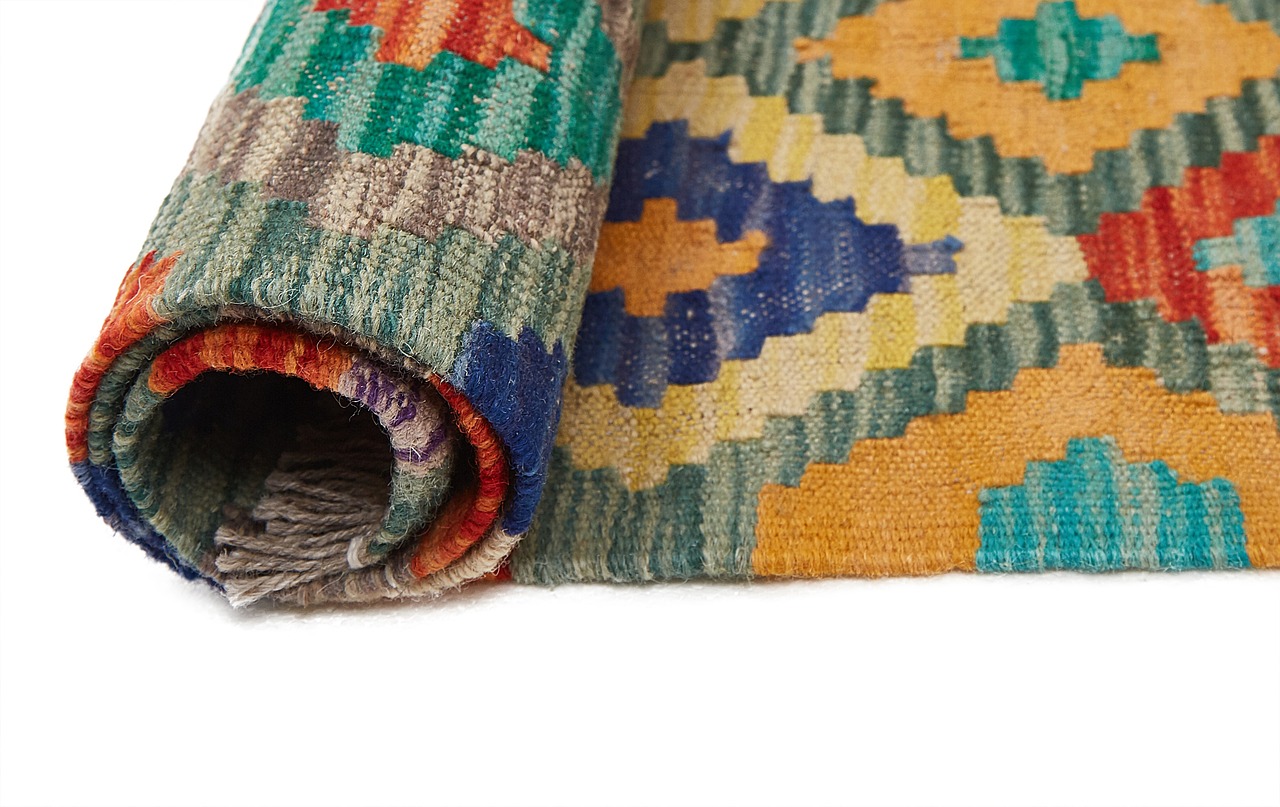
Choosing the Right Color and Pattern
When it comes to sewing, the color and pattern of your fabric can make or break your project. Think of it like painting a masterpiece; the colors you choose can evoke emotions, set the mood, and even tell a story. So, how do you navigate this vibrant world of hues and designs? Let’s dive into the essentials that will help you make informed decisions that resonate with your personal style and the purpose of your creation.
First and foremost, understanding color theory is crucial. This isn’t just about picking your favorite shades; it’s about creating a harmonious palette that enhances your project. The color wheel is your best friend here. It’s divided into primary, secondary, and tertiary colors. By grasping the relationships between these colors—such as complementary, analogous, and triadic—you can create stunning combinations that will make your sewing project pop. For instance, pairing a vibrant blue with a soft orange can create a striking contrast, while shades of green and yellow can produce a more soothing effect. This understanding will help you to avoid color clashes that can detract from your overall design.
Next, let’s talk about patterns. Patterns can add personality and flair to your sewing projects, but they also require some careful consideration. When selecting a pattern, think about the scale and style. Large patterns can be overwhelming on smaller garments, while tiny prints might get lost on a larger piece. It’s all about balance! Additionally, consider the context of your project. Are you sewing a casual summer dress or a formal evening gown? The pattern should reflect the occasion. For example, floral prints are often associated with a relaxed vibe, while geometric designs can lend a more modern, chic feel.
When choosing both color and pattern, it’s also important to think about the fabric type. Different fabrics can absorb and reflect colors differently. A vibrant color on a glossy satin might look completely different than on a matte cotton. Always consider how the fabric will interact with the colors and patterns you’ve chosen. If you’re unsure, it’s a good idea to test swatches together before committing to a larger cut. This way, you can see how they work together in terms of texture and light.
To make the decision-making process a little easier, here’s a quick table summarizing some key points:
| Aspect | Considerations |
|---|---|
| Color Theory | Understand relationships (complementary, analogous) to create harmony. |
| Pattern Scale | Choose scale based on garment size; balance is key. |
| Fabric Interaction | Test swatches to see how colors and patterns look together. |
Finally, don’t forget about your own personal style. Your sewing project is a reflection of you, so choose colors and patterns that resonate with your personality and preferences. Are you a fan of bold and bright, or do you lean towards muted tones? Do you love playful prints, or do you prefer classic solids? The beauty of sewing is that you can create something that is uniquely yours. Trust your instincts and let your creativity shine!
Q: How do I know what colors suit my skin tone?
A: Generally, warm skin tones look great in earthy colors, while cool tones shine in jewel tones. Experiment with different shades to see what feels best!
Q: Can I mix patterns?
A: Absolutely! Just keep in mind the scale and color palette. Mixing different patterns can create a fun and eclectic look.
Q: What if I’m unsure about my choices?
A: Don’t hesitate to seek advice from sewing communities or fabric store staff. They can provide valuable insights and suggestions!
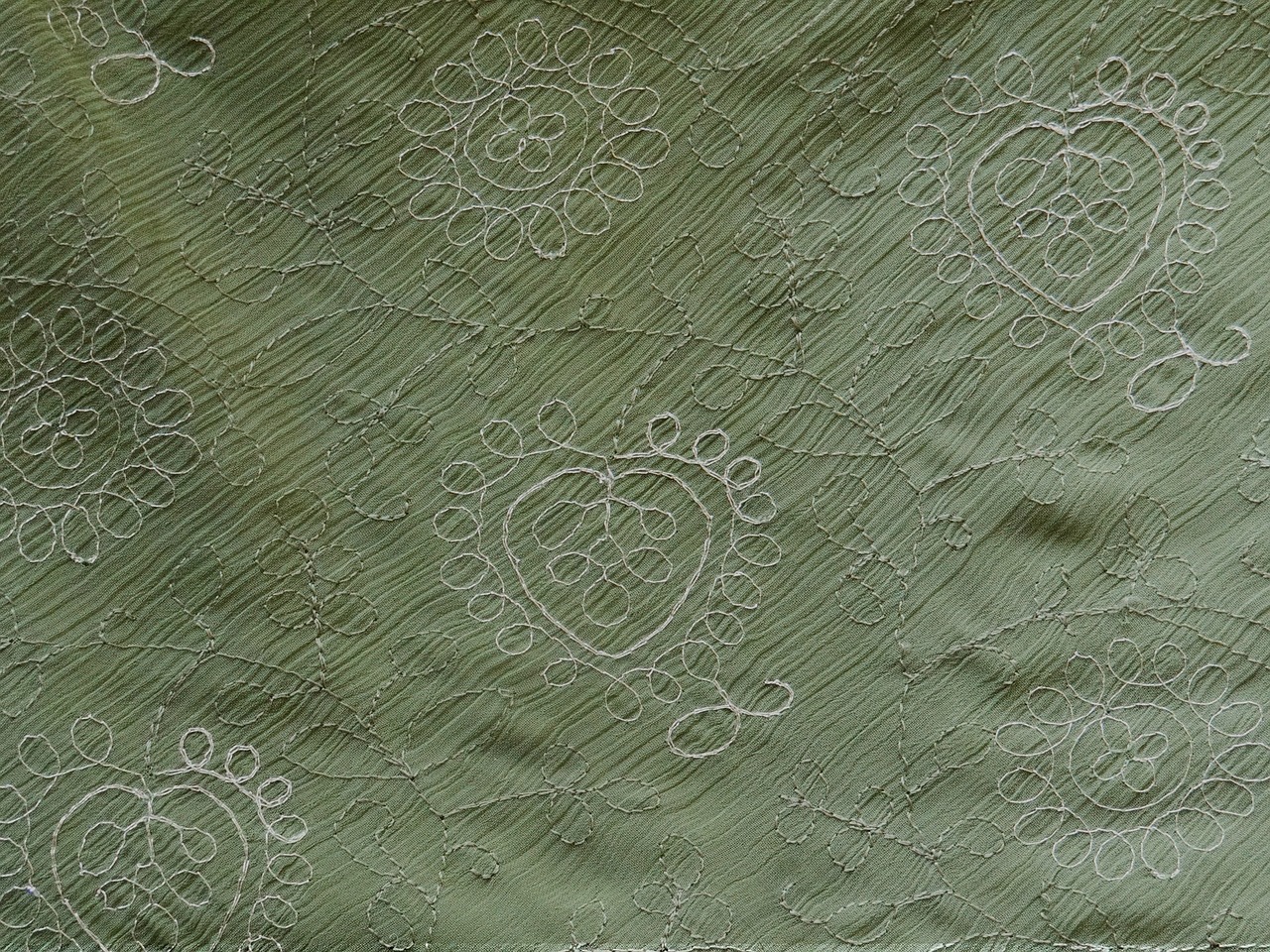
Color Theory Basics
Understanding color theory is crucial when selecting fabrics for your sewing projects. It’s like having a secret weapon in your sewing arsenal! Color theory helps you understand how different colors interact, which can significantly impact the overall vibe of your creation. Imagine walking into a room filled with vibrant colors that just seem to sing together; that’s the power of color harmony at work.
At its core, color theory breaks down into three main categories: primary colors, secondary colors, and tertiary colors. Primary colors—red, blue, and yellow—are the building blocks of all other colors. When you mix two primary colors, you get secondary colors (like green, orange, and purple). Mixing a primary color with a secondary color yields tertiary colors, which are more nuanced shades. This understanding allows you to mix and match fabrics in a way that creates a cohesive look.
When choosing colors for your fabric, consider the color wheel. The color wheel is a visual representation of colors arranged according to their chromatic relationship. Colors opposite each other on the wheel are called complementary colors, and they create a striking contrast when paired together. For instance, if you’re sewing a dress in a deep blue fabric, a pop of orange in the accessories could create a stunning visual impact!
Another important concept is analogous colors, which are colors that sit next to each other on the color wheel. These colors create a serene and comfortable design, perfect for projects where you want a more subtle, harmonious look. For example, if you choose shades of blue and green for your fabric, the result will be soothing and easy on the eyes.
Don't forget about the psychology of color! Different colors evoke different feelings and emotions. For instance:
- Red: Passion, energy, and excitement
- Blue: Calmness, trust, and peace
- Yellow: Happiness, optimism, and warmth
- Green: Growth, renewal, and tranquility
- Purple: Creativity, luxury, and mystery
By understanding these emotional responses, you can choose fabrics that not only look great together but also convey the mood you want for your project. If you’re making a cozy quilt for a baby, soft pastels might be the way to go, while a bold, vibrant palette could be perfect for a statement piece.
Finally, consider the context in which your finished project will be used. Think about the environment, the occasion, and even the season. A light, airy fabric in bright colors might work beautifully for a summer dress, while rich, darker shades in heavier fabrics could be perfect for winter wear. The right color choices can elevate your sewing project from ordinary to extraordinary!
In summary, mastering the basics of color theory can transform your sewing projects into visually stunning creations. So, next time you’re at the fabric store, take a moment to think about how the colors you choose will work together. Your sewing projects will thank you!
Q1: How do I choose the right color for my sewing project?
A1: Consider the mood you want to convey, the context of your project, and use the color wheel to find complementary or analogous colors that work well together.
Q2: What are the best colors for a beginner?
A2: Start with neutral colors or soft pastels, as they are versatile and can be easily paired with other shades.
Q3: Can I mix patterns and colors?
A3: Absolutely! Just ensure that the colors complement each other and that the patterns vary in scale to create visual interest.
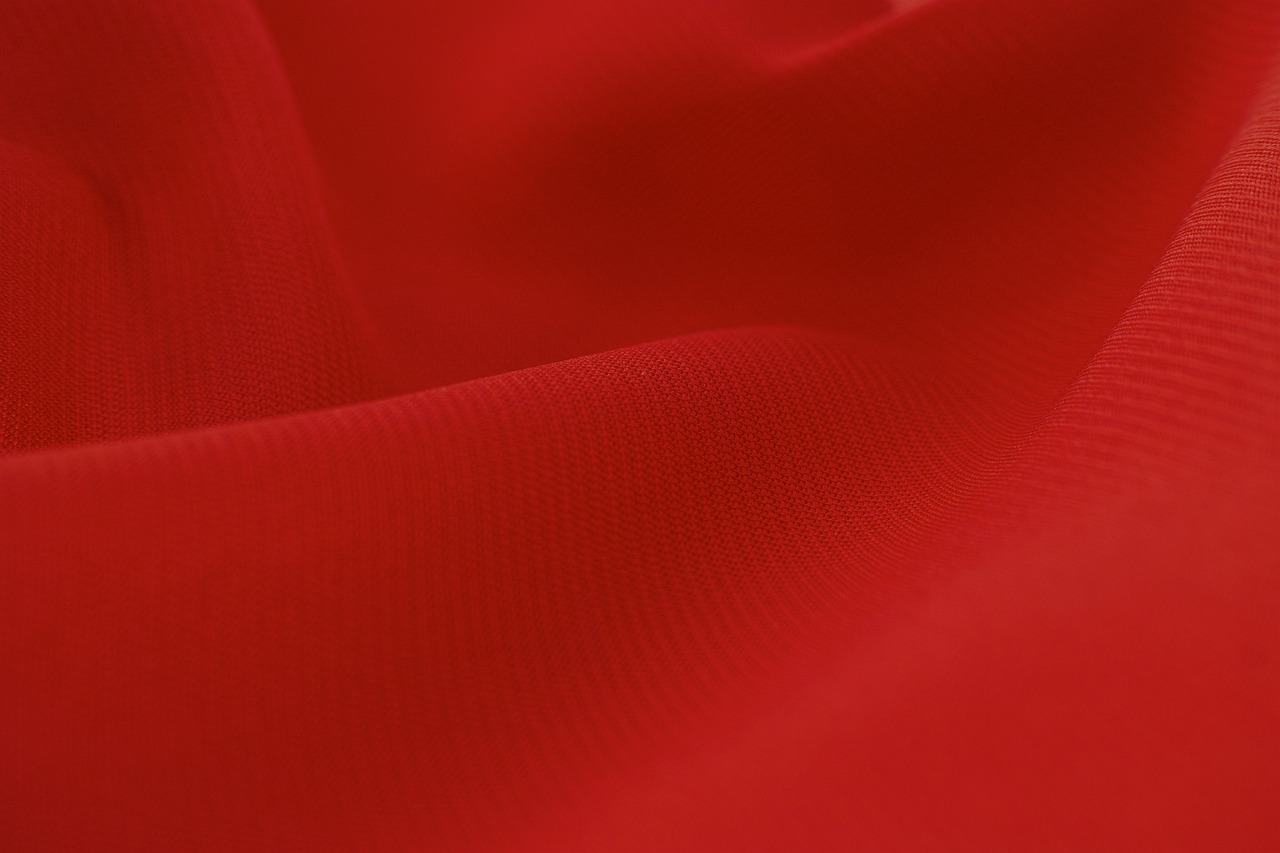
Pattern Considerations
Choosing the right pattern for your fabric is like picking the perfect icing for a cake; it can make or break the entire project. Patterns can add depth, texture, and personality to your sewing creations, but they also require careful consideration to ensure they align with your vision and the fabric you’ve chosen. When selecting a pattern, think about the overall style you want to achieve. Are you going for something casual and laid-back, or are you aiming for a more polished and sophisticated look? The pattern should complement not only the fabric but also the intended use of the finished piece.
One of the first things to consider is the scale of the pattern. Larger prints can be stunning but may overwhelm smaller garments or accessories. Conversely, tiny prints can get lost on larger items, making them appear less dynamic. It’s essential to visualize how the pattern will translate onto your chosen fabric and project size. For instance, a bold floral print might look fabulous on a flowing maxi dress, while a delicate polka dot could be more suitable for a fitted blouse.
Another important aspect is the style lines of the pattern. Some patterns are designed with specific fabric types in mind, and using the wrong fabric can lead to disappointing results. For example, a structured pattern may not drape well if made from a lightweight fabric. Always check the pattern envelope for fabric recommendations and consider how the fabric's characteristics will affect the final look. If a pattern calls for a fabric with a certain amount of stretch, using a non-stretch fabric could result in an unwearable item.
Here's a handy table to help you understand how different patterns and fabrics work together:
| Pattern Type | Recommended Fabric Types | Best For |
|---|---|---|
| Structured Patterns | Cotton, Denim, Canvas | Jackets, Pants, Skirts |
| Flowy Patterns | Chiffon, Silk, Rayon | Dresses, Blouses, Scarves |
| Stretch Patterns | Jersey, Spandex | T-Shirts, Leggings, Activewear |
| Quilted Patterns | Cotton, Batting | Quilts, Bags, Home Decor |
Lastly, don’t forget to think about your personal style and how the pattern reflects your individuality. Are you drawn to modern geometric designs, or do you prefer classic florals? Your fabric choice and pattern should tell a story about who you are as a creator. Remember, sewing is not just about following instructions; it’s about expressing yourself through your work. So, choose a pattern that excites you and makes you eager to sew!
- What should I consider when choosing a fabric pattern? Look for scale, style lines, and how the pattern complements the fabric type.
- Can I use any fabric for any pattern? Not always. Patterns often recommend specific fabric types to achieve the intended look and fit.
- How do I know if a pattern will suit my skill level? Most patterns indicate the skill level required, so check for beginner, intermediate, or advanced labels.
Frequently Asked Questions
- What factors should I consider when choosing fabric for my sewing project?
When selecting fabric, consider the type of project you're working on, the characteristics of the fabric itself (like weight and drape), and your personal preferences. Think about the end use of the item—will it be worn, used for decor, or something else? Each project has its own fabric needs!
- What are the differences between natural and synthetic fabrics?
Natural fabrics, like cotton and silk, are derived from plants or animals and often offer breathability and comfort. Synthetic fabrics, such as polyester and nylon, are man-made and can provide durability and stretch. Understanding these differences can help you choose the best fabric for your specific project.
- How does fabric weight affect my sewing project?
Fabric weight plays a crucial role in how your project turns out. Lightweight fabrics are great for flowy garments, while medium and heavyweight fabrics provide structure and durability. Consider how the weight will affect the final look and feel of your creation.
- What are some common lightweight fabrics and their uses?
Common lightweight fabrics include chiffon, voile, and georgette. These fabrics are ideal for making delicate garments like blouses, skirts, or overlays. However, they require specific sewing techniques to handle them properly, so be sure to familiarize yourself with those!
- What sewing tips can help with lightweight fabrics?
When working with lightweight fabrics, use a fine needle to avoid damaging the material. Additionally, consider using techniques like French seams or bias binding to prevent fraying. Pinning carefully and using a walking foot can also help manage shifting while sewing.
- How do I choose the right color and pattern for my fabric?
Choosing the right color and pattern involves understanding color theory basics. Look for harmonious color combinations that suit your style and project. Patterns should complement the design and not overwhelm it, ensuring a cohesive and appealing finished product.
- Are there any resources to help me learn more about fabric types?
Absolutely! Many online resources, sewing books, and classes can provide in-depth knowledge about different fabric types, their characteristics, and how to work with them effectively. Local fabric stores often have knowledgeable staff who can also guide you!



















